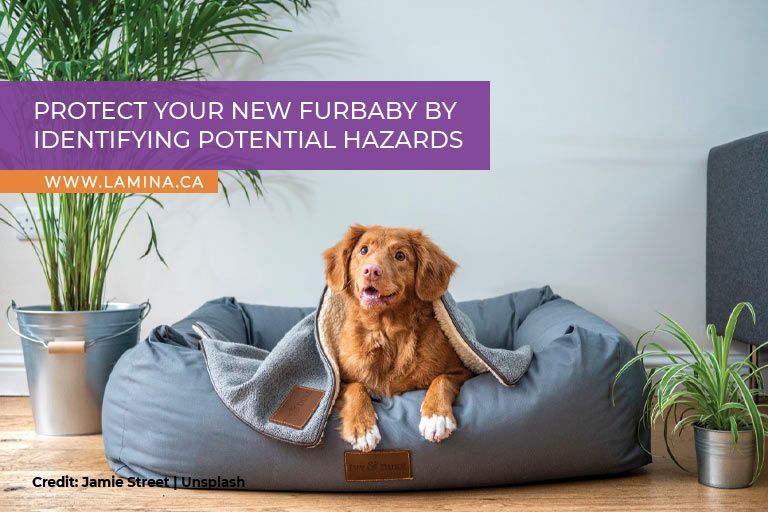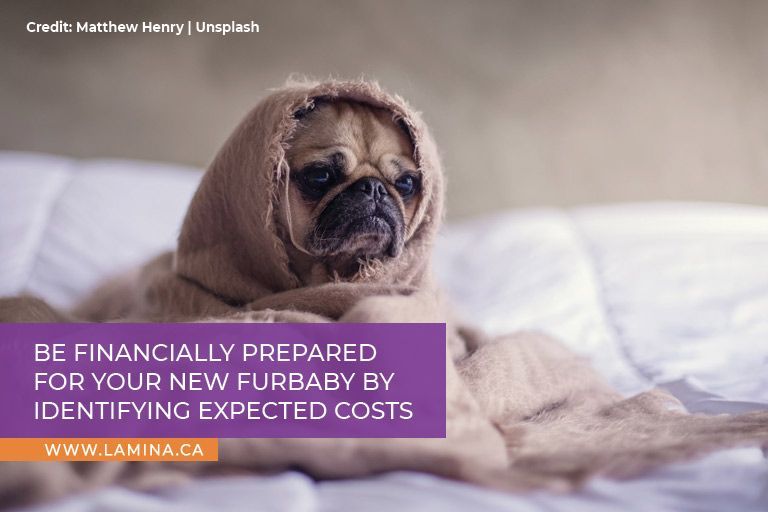Many common household items are toxic to dogs.
Secure electrical cords and wires. Chewing on these can be a serious health risk. Invest in cable organizers or furniture clips to keep them out of reach.
Scrutinize cleaning products and medications. Employ childproof cabinet locks or store these items in secure locations.
Research houseplants beforehand — popular choices like lilies and philodendrons can cause vomiting, diarrhea, or worse.
Sharp objects and choking hazards also deserve extra attention. Keep them safely tucked away on high shelves or in locked cabinets. Consider using baby gates to block off areas with potential dangers.
Secure trash cans with a lid or use a cabinet-mounted option. Pick up dropped items like toys, socks, or coins promptly.
Puppies explore the world with their mouths. Invest in dog-safe chew toys to redirect chewing behaviour away from furniture and personal belongings. Opt for durable, age-appropriate chew toys catering to your dog's breed and size.
Accidents happen, especially during
house training. Stock up on absorbent puppy pads and designate a specific bathroom area. Choose a surface that's easy to clean, like a plastic tray, and use a consistent cleaning spray specifically designed for pet accidents.
Stairs can be a safety hazard for young puppies. If you have stairs, consider temporary gates to block access until your dog is fully grown and coordinated. A non-slip surface on stairs can also provide better footing for your furry friend.
Creating a Doggy Paradise: Comfort and Convenience
Now that your home is safe, let's create a comfortable haven for your furry friend. Designate a specific area as their "home base" — a comfortable bed, a food and water bowl station, and chew toys. This will provide a sense of security and a space to relax.
Consider the type of flooring in your home. Rugs provide traction for playful pups, but may be difficult to clean. Opt for easy-to-maintain surfaces like tile or laminate wood, with strategically placed washable rugs for comfort.
Lighting can be an issue for some dogs. Invest in nightlights for hallways or provide a designated "safe space" with dim lighting where your dog can retreat if needed.
Food and water bowls should be readily available, made from stainless steel or ceramic for easy cleaning. Purchase a sturdy leash and collar that fits comfortably. A waste disposal system with biodegradable bags will make walks more convenient.
Collars and identification tags are crucial for the safety of your dog. Choose a collar made of comfortable, non-irritating material that fits snugly but allows for adjustability as your dog grows. A clearly visible ID tag with your contact information is essential in case your furry friend ever wanders off.
Training for Success: Investing in Time and Tools
A well-trained dog is a happy dog (and a happier homeowner!). Here’s what you need to know:
Consider enrollment in obedience classes to create a strong foundation for communication and good behaviour. Classes provide structure, socialization, and valuable tips.
Crate training is highly beneficial. A crate offers a secure, den-like space for your dog to relax and feel safe. This helps with house training, separation anxiety, and preventing destructive behaviour when left unattended.
Training Tips:
Invest in training tools like clickers, treats, and durable chew toys. Remember, positive reinforcement goes a long way. Be patient, consistent, and reward good behaviour.
Budgeting for Your Canine Companion: Planning for the Long Haul
Welcoming a dog is a long-term commitment. Let's break down the expected costs to ensure you're financially prepared.
Adoption fees (if adopting), purchase from a breeder, initial vet visits (including vaccinations and deworming), spay/neuter surgery, food and water bowls, bed, leash, collar, harness, and identification tags.
- Ongoing Costs
- Food and Treats
Food costs depend on your dog's breed, size, and activity level. High-quality food is an investment in your dog's health, but remember to factor in the cost of treats as well.
Regular checkups, vaccinations, and parasite prevention are crucial for maintaining your dog's health. Budget for unexpected vet visits as well, just in case.
Consider pet insurance for unexpected health concerns. It can provide peace of mind and significant financial protection in the long run.
Depending on the breed, professional grooming may be necessary.
Provide your dog with mental and physical stimulation through engaging toys and durable chews.
Heartworm, flea, and tick preventatives are crucial for your dog's health.
Be prepared for unforeseen circumstances. These can include emergency vet visits, illness-related medications, or damage caused by your dog (e.g., chewed furniture, damaged carpet). If you don’t have the necessary funds set aside, you can turn to
online payday loan alternatives to access funds quickly.
Financial Planning Tips
Different breeds have varying needs and costs associated with them. Choose a breed that fits your lifestyle and budget.
Factor in all the expected costs, including initial expenses and ongoing needs.
Don't break the bank upfront. Plan purchases like beds, crates, and toys over time.
- Create a pet savings account
Set aside a specific amount each month to cover future vet bills and emergencies.
It can be a lifesaver – look for plans that cover accidents, illnesses, and surgeries. While not mandatory, it can help manage unexpected medical costs.
Unexpected situations occur. Explore responsible financial options to bridge any gaps, like a personal loan from a reputable lender.
Set Your Dog up for a Comfortable Life







